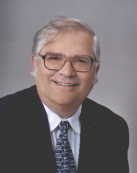Year: 1994 Pages: 8
The Global Positioning System (GPS) constitutes a large scale near-equivalent to the spinning Mossbauer experiments. The transit time between the satellite and ground-based receivers is routinely measured. In addition, the atomic clocks on the satellite are carefully monitored; and high precision corrections are provided as part of the information transmitted from the satellites. Because the satellites and the receivers rotate at different rates (unlike the Mossbauer experiments), a correction for the motion of the receiver during the transit time is required. This correction is generally referred to as a Sagnac correction, since it adjusts for an anisotropy of the speed of light as far as the receiver is concerned. Why is there no requirement for a Sagnac correction due to the earth's orbital motion? Like the transit time in the spinning Mossbauer experiments, any such effect would be completely canceled by the orbital velocity.
The Very Long Baseline Interferometry (VLBI) experiments extend the phonomena of interest to aberration effects as well as the Sagnac effect.


